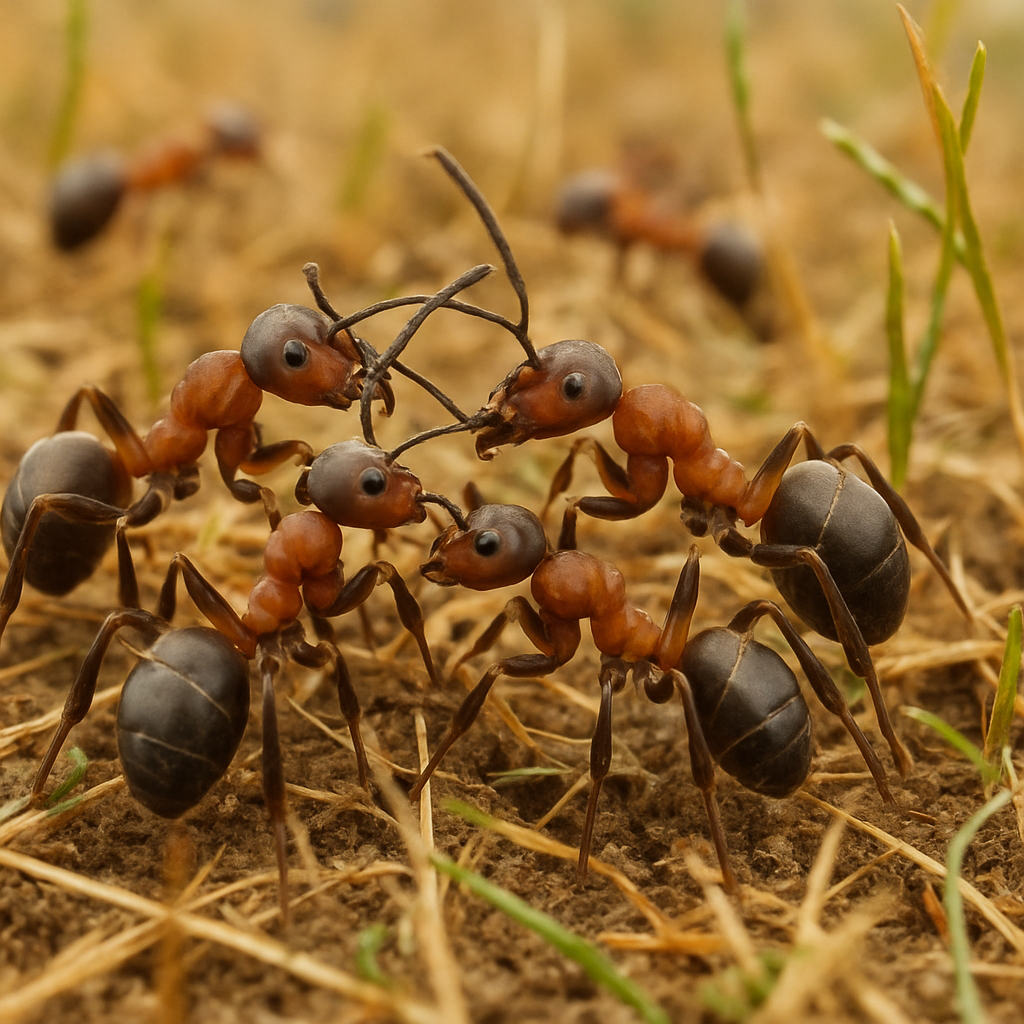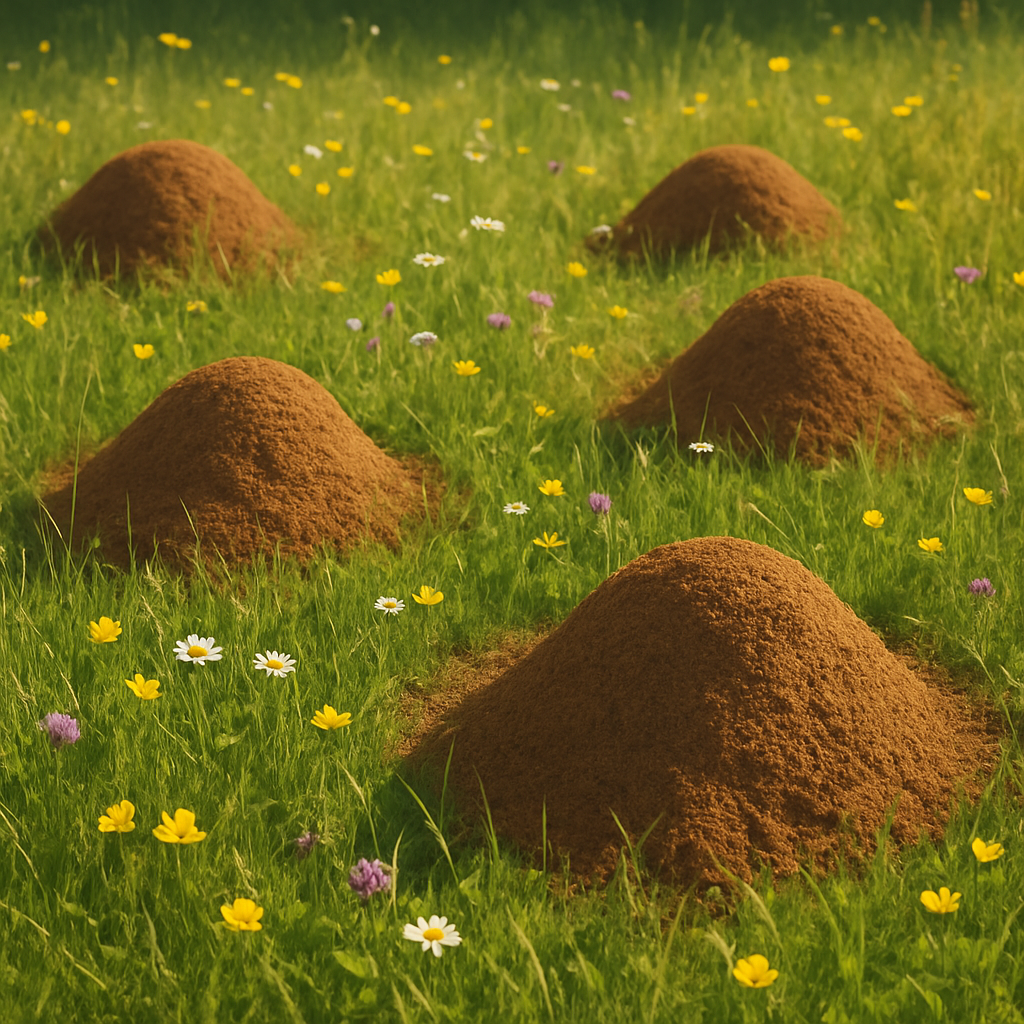Fields and meadows are bustling with life, and ants are among the most fascinating inhabitants. These industrious insects play a vital role in the ecosystem. They aerate the soil, disperse seeds, and even help control pests.
Ants are diverse, with many species thriving in open fields. Each species has unique traits and behaviors. Understanding these differences is key to appreciating their ecological importance.
Identifying ant species in fields can be a fun and educational activity. It requires keen observation and a bit of patience. With practice, you'll become adept at recognizing various ant species.
Soil ants, in particular, are crucial to healthy fields. They improve soil structure and nutrient cycling. Their presence indicates a thriving ecosystem.
Join us as we explore the world of ants in fields and meadows. Discover their habits, habitats, and the benefits they bring to our environment.
Why Ants Thrive in Fields and Meadows
Ants are incredibly adaptable creatures. Fields and meadows offer them ideal conditions to thrive. These open areas provide warmth and abundant food resources. Sunlight and open spaces allow ants to build productive colonies.
The rich biodiversity in fields means ample food choices. Ants can feast on seeds, insects, and plant nectar. This variety supports numerous ant species. Plus, the absence of large predator shade gives ants room to expand.
Ants also benefit from the loose soil in fields and meadows. It makes nest construction easier, aiding in colony growth. Key factors for their success include:
- Warm climate with sun exposure
- Abundant food sources
- Loose, fertile soil for nesting
Ants contribute significantly to field ecosystems. Their presence often signals a balanced natural environment.
Common Ant Species in Fields and Meadows
Fields and meadows host a captivating variety of ant species. Each with unique traits. These species often go unnoticed. Yet, their roles are critical in maintaining ecological balance.
Understanding the different ant species living in these environments can be fascinating. These species vary in size, behavior, and nesting habits. Some are easily spotted, while others blend into the field's landscape.
A few species are more prevalent in these ecosystems. Their presence indicates a healthy, thriving meadow or field. Here's a glimpse of common ants you might encounter:
- Field Ants (Formica spp.)
- Thatching Ants (Formica obscuripes)
- Cornfield Ants (Lasius alienus)
- Other diverse soil ants
These ants don't just populate fields. They actively shape the ecosystem. Each species brings something valuable, influencing soil health, seed dispersion, and pest control.
Field ants, among others, construct visible nests. These mounds are often a sign of active, healthy ant colonies. Observing these creatures can add a new dimension to your outdoor explorations.

Field Ants (Formica spp.)
Field ants are common residents of open areas. They vary greatly in size and color. Some have shiny red or black bodies. These ants are industrious, often seen in large numbers.
Field ants build noticeable mounds in fields and meadows. These nests aid soil aeration and nutrient mixing. Their activity enhances the surrounding land. Despite their numbers, they aren't aggressive.

Thatching Ants (Formica obscuripes and Relatives)
Thatching ants are known for their impressive nest-building skills. They construct large mounds with plant material. These nests can be eye-catching in open fields.
Thatching ants are efficient ecosystem engineers. Their nests serve as microhabitats for other creatures. These ants also help with nutrient recycling. Their contribution to field ecology is notable.

Cornfield Ants (Lasius alienus)
Cornfield ants, named for their love of cornfields, are widespread. They have a distinctive small, dark appearance. These ants are primarily nocturnal, often active at night.
Cornfield ants are essential for pest control. They prey on crop pests, benefiting agriculture. These ants build shallow nests in fields, visible upon close inspection. They are a vital part of field ecosystems.

Other Notable Soil Ants
Apart from the more familiar species, fields host a variety of soil ants. These ants are less conspicuous but equally important. They influence soil structure and fertility.
Such species include tiny workers like pavement ants and larger carpenter ants. Their varied roles in the soil ecosystem are invaluable. They contribute to the rich ant diversity in fields.

Ant Species Identification: How to Tell Them Apart
Identifying ant species in fields can be a fun puzzle for nature enthusiasts. With close observation, you can start to see the differences. Each species has unique physical and behavioral traits.
Size and color are key identifiers. Field ants, for example, vary in size and can be red or black. Cornfield ants are usually small and dark. Thatching ants often have a mix of red and brown shades.
Behavioral traits are also telling. Some ants might be night owls, active when most sleep. Others are seen bustling in daylight. Watching when they are active can offer clues.
Nest structures are another identifier. Field ants make prominent mounds. Thatching ants construct intricate, thatched nests, while cornfield ants prefer shallow ones.
Here's a simple checklist to aid ant identification:
- Observe body size and color.
- Note activity patterns (day or night).
- Study the nest structure and location.
With practice, distinguishing ant species gets easier and more enjoyable.


The Role of Soil Ants in Field Ecosystems
Soil ants are the unsung heroes of fields and meadows. They maintain the delicate balance in these ecosystems. By building their nests, ants aerate the soil, which enhances nutrient circulation.
These industrious insects help control pests by preying on harmful species. This naturally reduces the need for chemical pesticides, which can harm other wildlife. Their presence signals a thriving ecosystem.
Ants also contribute to seed dispersal. Some species are known for their role in spreading plant seeds. This activity promotes plant diversity and supports the overall health of the habitat.
Ants play these vital roles through:
- Soil aeration for nutrient circulation.
- Natural pest control.
- Seed dispersal for plant diversity.
In fields and meadows, ants are small but mighty agents of ecological change.

Ant Nests: Where and How They Build in Fields
Ant nests in fields are marvels of natural engineering. These nests can be found in various locations, such as open meadows and under rocks. The choice often depends on the specific ant species.
Most ant nests start underground. These below-surface chambers shield ants from predators and extreme weather. Nests can be intricate, with complex networks of tunnels and chambers.
Ants construct nests using available materials like soil, plant matter, and even small pebbles. This construction serves several purposes, such as regulating the nest's climate and protecting from threats. Ant colonies organize these nests efficiently to support their large populations.
Common features of field ant nests include:
- Subterranean chambers and tunnels
- Use of natural materials like soil and plants
- Strategic placement for protection
Ant nests are a testament to the adaptability and resourcefulness of these tiny creatures.

Ant Behavior and Life Cycle in Meadows
Ant behavior in meadows is a fascinating spectacle. These ants are busy creatures, always on the move. They search for food and tend to their colonies.
The ant life cycle begins with the queen laying eggs. These eggs develop into larvae, then pupate into adult ants. A single colony can thrive for years, cycling through many generations.
Ants play specific roles within their colonies, showcasing a structured society. You might observe:
- Foragers: Collecting food
- Guards: Protecting the nest
- Workers: Maintaining the nest
This division of labor ensures a thriving ant community. Watching ants in meadows offers insights into their complex and orderly world.

Are Field Ants a Problem? Benefits and Concerns
Ants in fields and meadows can be both a boon and a bane. While they aid in natural soil aeration and pest control, they can sometimes become a nuisance. Their presence can lead to a few concerns for farmers and gardeners.
Benefits of field ants include:
- Soil aeration
- Pest reduction
- Organic matter decomposition
On the flip side, they can disturb plant roots and attract unwanted pests like aphids. Understanding the dual nature of ants helps in managing them effectively. Always weigh their advantages against potential problems.

How to Coexist with Ants in Fields and Meadows
Harmony with ants is possible with a few simple strategies. These little insects play significant roles in ecosystems. Respect for their place in fields and meadows helps maintain balance.
To coexist peacefully, consider these tips:
- Avoid chemical pesticides
- Encourage natural predators
- Use barriers to protect sensitive plants
Creating barriers deters ants from reaching areas they shouldn't. Additionally, planting ant-repellent plants, like mint or tansy, can help. This fosters a more balanced interaction.
Remember, ants contribute positively to ecosystems. Embracing this benefits both your field and the ant community. Cooperation is key.

Conclusion: Appreciating Ant Diversity in Fields
Ants are more than just tiny creatures crawling around. They are vital components of our ecosystems. Their activity in fields and meadows contributes to soil health and biodiversity. Understanding and appreciating this diversity enhances how we view our natural surroundings.
By observing and learning about the various ant species, we can foster a deeper connection with nature. Let's cherish these remarkable insects and the vibrant worlds they inhabit within our fields.





